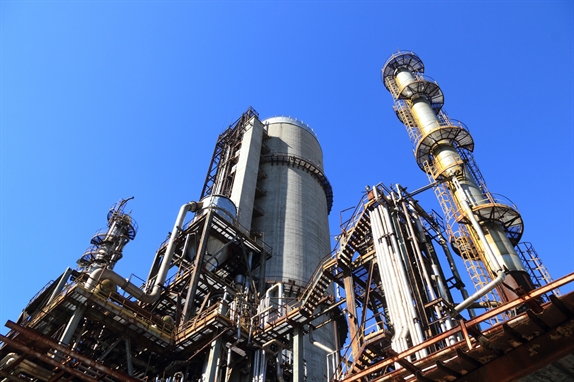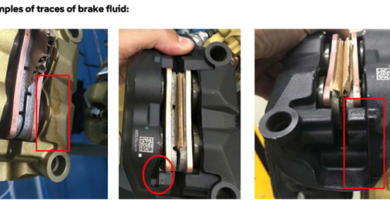C2H2OH: Ethanol
NOTE: This is the second of a multi-part series on fuel and fueling systems. Part One: Understanding octane – AKI, MON and RON – Oh My!
When Henry Ford rolled out the Model T in 1908, it put 20 horsepower to the ground with a 179 cubic inch inline-four engine. The Model T had a top speed of about 40 miles per hour and got about 18 miles per gallon. The fuel of choice for that first Model T was ethanol, which 1908 America’s legions of farmers could make at home in quantities great enough to both fill the T’s 10-gallon fuel tank and make moonshine. Ethyl alcohol, the substance we call ethanol, quickly fell out of favor as a fuel for internal combustion engines simply due to the increasing use and rapidly declining price of gasoline. Ethanol is easy to make in about a week and only requires corn, water, yeast, sugar, heat and patience.
Despite losing favor as a single-substance fuel source, ethanol got into the gas tank again in the 1920s, when Standard Oil started adding it to their gas to boost octane in an attempt to reduce knocking in engines. With the Great Depression in full swing in the 1930s, Americans bought “gasohol,” a 90/10 gasoline/ethanol mixture. Gasohol enjoyed a brief comeback during World War Two, when most U.S. manufacturing and production went to the war effort. Following the end of the war, however, ethanol disappeared from the gas supply in the U.S. as the nation enjoyed unprecedented industrial success and economic growth.
The oil crisis of the 1970s brought ethanol into vogue yet again, and Congress created incentives and subsidies for companies researching the conversion of organic material, like corn, into energy. First up was the Solar Energy Research, Development and Demonstration Act of 1974, and the Environmental Protection Agency (EPA) got in on the game by kicking off a 13-year phaseout of lead in gasoline. Ethanol found its way into nearly every gallon of gas sold in the U.S. during that time as an anti-knock additive, suddenly important due to the missing benefits of having lead in the mixture.

In 1978, the Energy Tax Act reintroduced the term gasohol, defining it as a substance with at least a 90/10 gasoline/ethanol blend. This law effectively created a $0.40 per gallon subsidy for ethanol producers, spurring production of the volatile liquid in 10 distillation facilities that eventually produced upwards of 50 million gallons of ethanol every year. In just under a year, Amoco, Chevron (formerly Standard Oil), Texaco and other major refiners were pumping millions of gallons of ethanol-blended gasoline into American fuel tanks.
Congress boosted its support of ethanol production throughout the 1980s, starting with the Energy Security Act in 1980 that guaranteed a million dollars in loans for any firm willing to put up 90 percent of the construction cost for an ethanol plant. That same year saw barriers go up against importing foreign ethanol. By 1984, there were over 160 ethanol plants in the U.S., and the government bankrolled $0.60 of every gallon of ethanol produced in the country. Even this massive subsidy wasn’t enough; by the end of 1985, about half of the ethanol plants had gone bust. Ethanol subsidies didn’t drop below $0.50/gallon until 2011, when Congress removed completely the $0.45/gallon ethanol subsidy effective 1 January 2012. That had the effect of raising gas prices a little over four cents a gallon almost immediately.
The idea of using a 90/10 gasoline/ethanol blend in winter to control carbon monoxide emissions got its official start in Colorado in 1988. In 1992, amendments to the Clean Air Act mandated the wintertime use of ethanol in gas in 39 urban regions in the U.S.—regions where the EPA said the emissions danger to the ozone layer was the highest. A dozen states boosted their subsidies in the mid-1990s due to poor corn harvests (which drove corn prices higher), which caused ethanol producers’ material costs to skyrocket despite most of them switching from coal to natural gas for their power source.

In the late 1980s, the refining industry started putting methyl tertiary butyl ether (MTBE) in our gasoline. MTBE is made by fusing together natural gas and petroleum. Unfortunately, by the end of the 20th century, scientists and environmentalists found enough MTBE in America’s water supply for the states, and eventually the federal government, to start banning its use, a process completed in 2003. MTBE was replaced by ethyl tertiary butyl ether (ETBE), a substance made by fusing together (wait for it!) ethanol and petroleum, further increasing the percentage of ethanol pushed into every gallon of gas. However, the amount of ETBE in a gallon of gas isn’t included in the measurement of how much ethanol is in a gallon of gas, because ETBE is considered an additive instead of one of the base ingredients; this means that your E10 gasoline at the pump isn’t really E10 gasoline.
Congress ensured the perpetual presence of ethanol in America’s gasoline supply by passing the Energy Independence and Security Act of 2007, legislation that ordered 36 billion gallons of ethanol and other substances be blended into the fuel supply by 2022. According to the Renewable Fuels Association, a pro-ethanol organization, the now 200-plus ethanol refineries in the United States are currently capable of producing over 16 million gallons of ethanol per year.
Ethanol is considered a green fuel because it comes from a renewable resource—corn. However, every ear of corn that gets mashed to make ethanol is an ear of corn that doesn’t get processed into cattle feed, corn meal, high fructose corn syrup or tortillas. It’s touted by the ethanol production industry as “clean burning,” “high octane” and a “job creator.” Speaking out against its use is therefore tantamount to political suicide for any public office holder willing to take on this issue, especially in the corn-producing states of the American Midwest. Any individual citizen that decries the use of ethanol runs the risk of being branded as unpatriotic, even if they’re only concerned about the health and well-being of their vintage motorcycle’s fueling system.

The damage alcohol does to the human body is well documented. We consume ethyl alcohol (ethanol) in massive quantities as a society, legally, straight from the bottle, can or box. When consumed, ethanol receives front-of-the-line service inside our bodies, getting processed ahead of nearly everything else we might consume at the same time. Alcohol’s processing starts in the stomach, where the dehydrogenase enzyme starts to break it down; most of the alcohol is absorbed in the small intestine, but about a tenth of it goes out through exhalation, perspiration and urination; this is why you can literally smell alcohol on somebody’s breath. From the small intestine, blood carries alcohol to the liver, where it is attacked as a poison. The liver works desperately to clean it out of the blood and return the body to equilibrium, which is why chronic alcohol abusers often suffer liver failure. Their liver simply wears out from processing so much alcohol.
In addition to the damage this substance does to our society through the scourges of alcoholism and drunk driving, it can also contribute to a myriad of health problems such as cancer, heart disease, obesity, hyper- and hypoglycemia, kidney disease, liver disease and other syndromes. The current blend of about 10 percent ethanol in each gallon of gas, while perhaps not totally ideal, is easily processed by modern internal combustion engines, from tiny thumpers in weed eaters to massive V-12 behemoths in supercars. This mixture, referred to as E10, has been in more or less continuous use for two generations. As long as it’s not stored for long periods of time, it doesn’t attract too much water, gum up too many fuel systems or damage too many vehicle components. For most car drivers, this isn’t too much of a problem; as Americans, we’re a car culture, and we drive a lot, burning up about 400 million gallons of gasoline every single day.
As motorcyclists, the cycle of storing and riding requires careful attention. While pure gas—or “E0” as refiners refer to it—can go “stale,” lose its volatility and gum up the works in our carburetors or fuel injection systems, the introduction of ethanol into the gasoline both accelerates and exacerbates this process, causing more problems and damage and doing it more quickly, even with “just” E10. This is the main reason it’s important to add a fuel stabilizer to the fuel system of a motorcycle being stored with gas in the tank for any extended period of time (i.e. more than three months). The stabilizer prevents the staleness and helps keep the ethanol from absorbing water and coming out of solution.

It’s 2019 and the world is changing. Where I live in central Virginia, we’ve had the hottest and wettest summers in recent years, beating records dating back to 1936, continuing an upward temperature swing that’s trending up since 1900 and accelerating since 2000. One of the results of that ongoing trend has manifested recently in a terrible drought parching more than half the nation. In 2000, corn cost about $110 per metric ton (2,205 lbs.), or about $2.82 per bushel (56 lbs.). In 2008, corn prices spiked to $293/mt ($7.50/bushel), dropping to about $150/mt ($3.84/bushel) in 2009; due to the drought, however, corn spiked to just over $338/mt ($8.66/bushel). The drought is not predicted to get better any time soon and may, in fact, extend over the next decade, driving corn and other food prices up for possibly the next 25 years.
One bushel of corn, processed properly, results in two and a half gallons of ethanol. That’s enough to manufacture 25 gallons of E10 fuel. Unfortunately, only the more difficult—and thus more costly—wet-milling method of processing corn yields ethanol. It may cheer you to know that wet-milling for ethanol production creates useful byproducts, such as 12 pounds of cattle feed, three pounds of corn meal, a pound and a half of corn oil and 17 pounds of carbon dioxide, generally captured to use as an industrial refrigerant or to fizz up carbonated beverages, per gallon of ethanol. (Processing and output data from North Dakota State University.) Even before factoring in the transportation, processing and storage costs involved in diluting gasoline with ethanol, eliminating ethanol from our fuel supply could create an immediate drop in the cost of gasoline, not to mention an immediate improvement in the quality of gas and a relaxation of strain on our food supply. Such disparate groups as the U.S. Department of Agriculture and the International Food Policy Research Group agree, both issuing reports in August 2012 that point to a causal relationship between the ongoing drought and high (and rising) corn prices.
Removing, even temporarily, the ethanol requirements for gasoline could bring down both corn and gasoline prices. In the Obama administration, the EPA held fast to its position that ethanol reduces the amount of pollutants spewed by internal combustion engines, refusing to agree to even a temporary waiver of the ethanol requirements. The Trump administration refuses to alter the ethanol requirements for other reasons.

In fact, in 2011, the EPA authorized the sale of E15 gas, fuel with 15 percent ethanol in it. While they said it should only be used in cars and light trucks made from 2001 on, opening that door allowed the corn and oil industries to charge right on through it. Federal law prohibits the use of E15 in any gas-powered tool or vehicle other than a car or light truck and the EPA acknowledges that E15 will damage these engines. The real risk is the use of blending pumps, which allow dispensing of E10, E15, E30 and E85 fuels based on the customer’s choice. Using those pumps can and will destroy motorcycle engines. Even California, with its reputation of existing on the cutting edge of emissions-reducing legislation, refuses to approve the sale or use of E15 within its borders, which should tell us a lot of what we need to know about the substance.
There may never be a day when our gasoline is free from ethanol, but perhaps we can see an end to the calls to increase the percentage of each gallon of gas that is given over to ethanol. Maybe the popularity of television series like Boardwalk Empire and Moonshiners will help in that arena, as it’s boosted the demand for moonshine – or at least the legal versions of corn whiskey. Corn, after all, belongs in our bellies, not in our gas tanks. Come back next month when we take on octane, which is far more misunderstood than how much ethanol goes in your fuel tank.
The MOA avoids political discourse as a matter of policy, and neither the MOA nor its Board of Directors endorses the author’s request that all motorcyclists engage with their duly elected senators and representatives at both the state and federal levels to encourage them to stand up for less ethanol in our gasoline. The rise of E15 is of particular concern to motorcyclists, as that foul substance stands to contribute significantly to the early demise of the powerplants of our beloved conveyances. –wes
Data and statistics gathered from fuel-testers.com, gpreinc.com, ifpri.org and upi.com. Search pure-gas.org to find ethanol-free gasoline near you in the USA and Canada.



